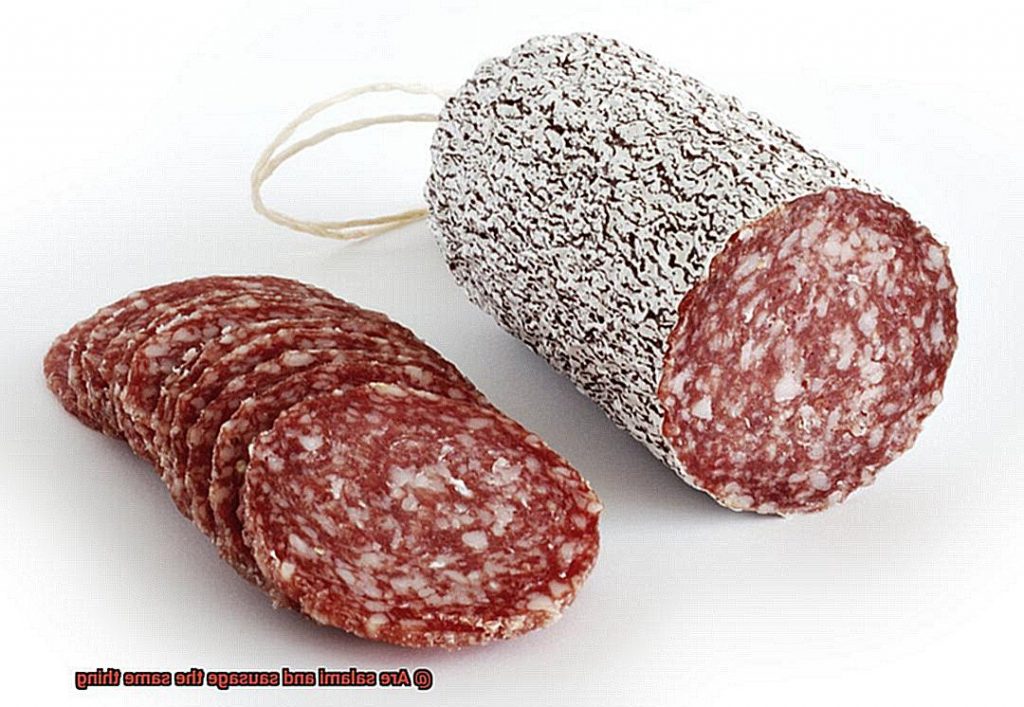If you’re a meat lover, chances are you’ve heard the terms Salami and Sausage thrown around quite a bit. But are they really the same thing? As someone who has spent years exploring the world of food and culinary arts, I can tell you that there is a big difference between these two cured meat products.
Salami is a type of fermented and air-dried sausage that boasts a distinct flavor and texture. It’s made by grinding high-quality meat, adding seasonings, curing agents, and other ingredients before stuffing the mixture into casings. On the other hand, sausage is a broader term that refers to any ground meat product seasoned and stuffed into casings or formed into patties.
So why does it matter if Salami and Sausage are different? Well, for starters, it affects their taste. Each product has its unique flavor profile that can make all the difference in your favorite dish. In this blog post, we’ll explore the similarities and differences between these two mouth-watering meats. We’ll also take an in-depth look at how each type is traditionally prepared so that you can understand what sets them apart.
Whether you’re an experienced foodie or just curious about what makes Salami and Sausage so special, this post is for you. So sit back, relax, and get ready to learn more about these delicious cured meats.
Contents
What is Salami?
Salami is a timeless delicacy that has been enjoyed across the globe for centuries. This delicious and versatile cured meat is believed to have originated in Italy, where it was traditionally made from beef or pork. Nowadays, salami can be made from a variety of meats including venison, turkey, and even horse meat.
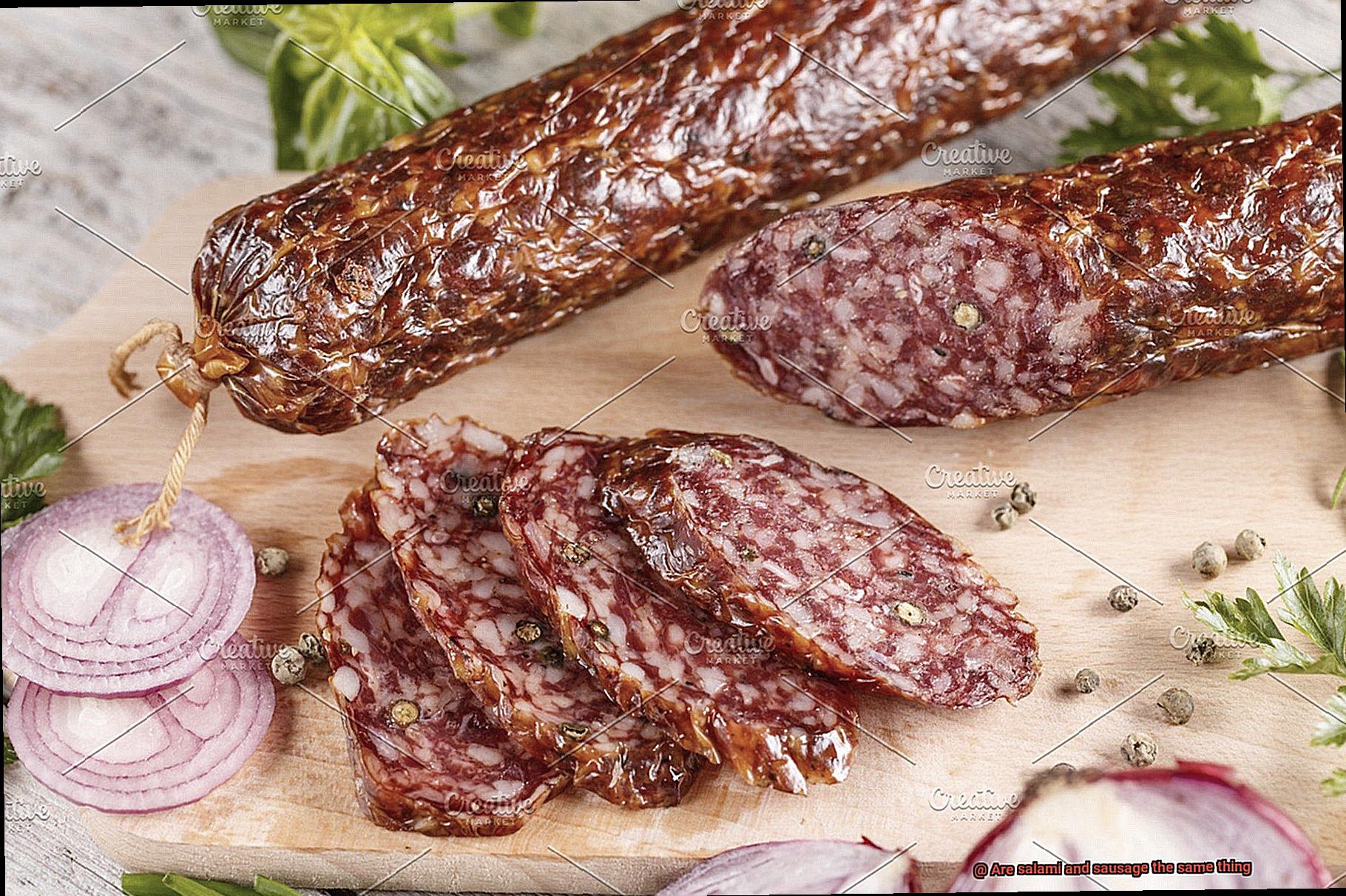
The process of making salami involves grinding the meat into a paste and blending it with various spices and seasonings such as garlic, fennel, and paprika. The mixture is then stuffed into a casing and left to dry and cure for several weeks. This unique curing process gives salami its distinct flavor profile that is rich, savory, and slightly tangy.
One of the defining characteristics of salami is its versatility. It can be enjoyed as a snack on its own or added to various dishes like pizza, pasta, or sandwiches. Salami’s firm texture makes it ideal for slicing thinly, allowing it to be used as an appetizer or snack.
There are many different types of salami available, each with its own unique flavor profile. Some popular varieties include Genoa salami, which is made with pork and flavored with garlic and red wine; soppressata, which is made with coarsely ground pork and seasoned with hot peppers; and finocchiona, which contains fennel seeds and is often made with wild boar.
What is Sausage?
Simply put, sausage is a mixture of ground or chopped meat, spices, salt, and other flavorful ingredients. This blend gets stuffed into a casing made from animal intestines, collagen, or cellulose. The result? A cylindrical meat product that can be cooked in various ways and enjoyed in a wide range of dishes.
What makes sausage so special? For one thing, its versatility. Sausages can be made from beef, pork, chicken, turkey, and game meats like venison or elk. Depending on the region, culture, and recipe, sausages can have a unique taste and texture. From spicy chorizo to mild Italian sausage, there’s a type of sausage out there to delight your taste buds.
But that’s not all. Sausage is also incredibly adaptable when it comes to cooking methods. You can grill it for a smoky flavor or fry it for crispy texture. Boiling and baking are also popular options. Whether you want to enjoy sausage on its own as a snack or add it to soups, stews, pasta sauces, and more, this versatile meat product is up for the challenge.
However, not all sausages are created equal. Quality ingredients and preparation methods can make all the difference in taste and texture. If you want to experience the best possible sausage feast, choose high-quality ingredients and find a preparation method that suits your preferences.
How are Salami and Sausage Different?
They have notable differences that make them unique from one another.
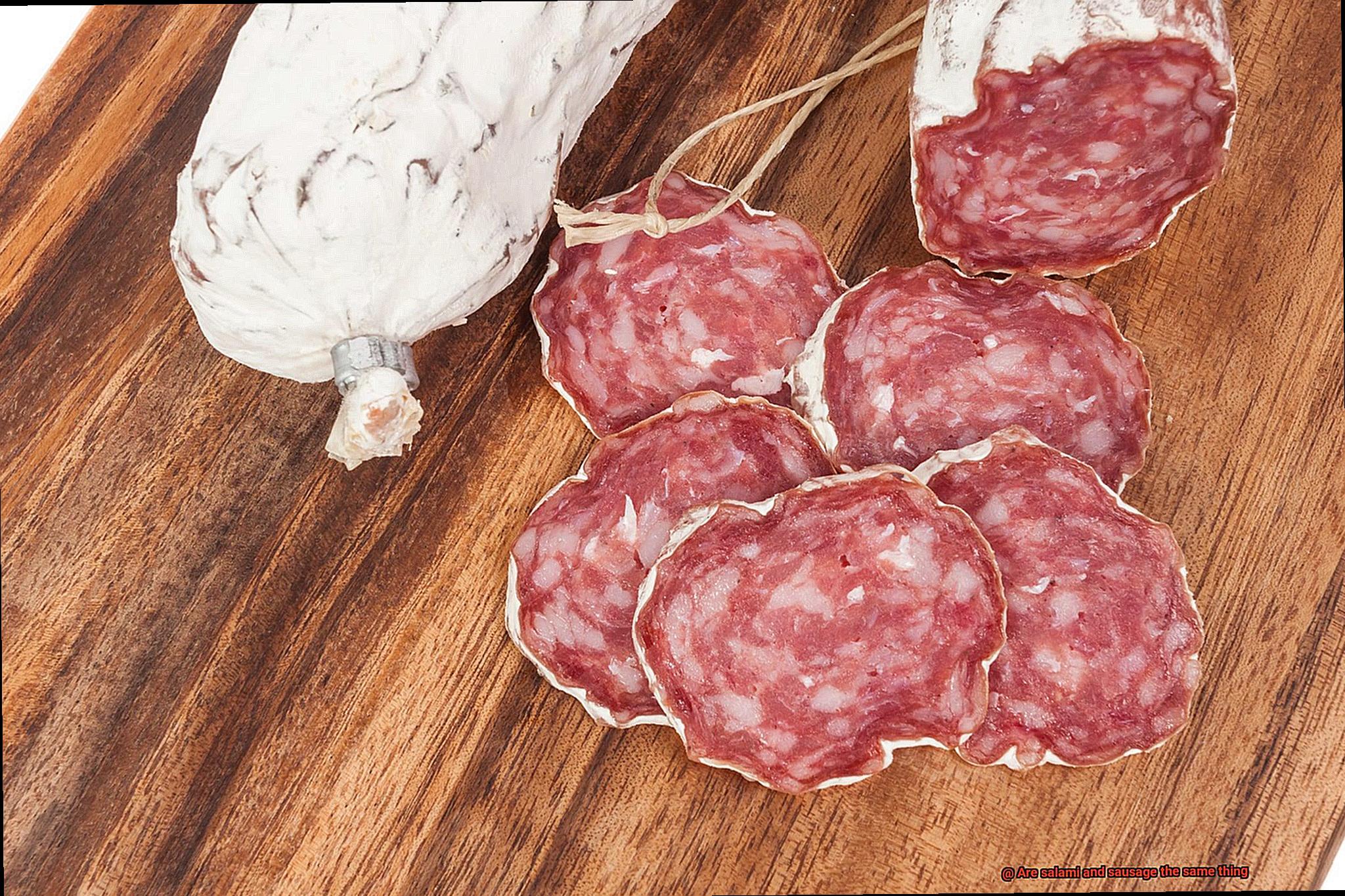
Firstly, let’s talk about texture. Salami is known for its dense and firm texture, while sausage can have a softer texture depending on how it’s cooked and prepared. Salami gets its chewy texture from the curing process, which makes it ideal for slicing and serving as part of an antipasto platter or using as a pizza or sandwich topping. On the other hand, sausage’s softer texture makes it perfect for cooking in pasta sauces, stews, and casseroles.
When it comes to flavor profiles, salami is usually flavored with a mix of spices and herbs, like garlic, pepper, and fennel seed. Sausage, however, varies in flavor depending on the type of meat used and the region where it’s made. For instance, Italian sausage may have oregano and basil seasonings, while German sausage commonly flavors with caraway seeds and mustard.
Salami and sausage also differ in their uses. Salami is often served as an appetizer or used as a pizza or sandwich topping. It’s not typically used as an ingredient in cooking because of its chewy texture. Sausage, on the other hand, is versatile enough to be used in a variety of dishes such as pasta sauces or casseroles.
The Making Process of Salami and Sausage
Salami and sausage are more than just meats; they are delicacies that have been enjoyed by people for centuries. As a seasoned expert in the art of making salami and sausage, let me take you on a fascinating journey through the intricate and meticulous process of creating these mouthwatering cured meats.
The first step in making salami and sausage is selecting the meat. Whether it’s pork, beef, or a combination of both, the meat needs to be ground and mixed with a variety of spices and seasonings. This is where the real magic happens. We create different flavor profiles – from spicy and herbaceous to sweet and savory – by carefully selecting the perfect blend of spices.
Once the mixture is ready, it’s time to get stuffing. The meat mixture is carefully stuffed into casings. Sausage casings can be made from natural or synthetic materials, while salami casings are typically made from natural materials like beef or pork casings. The stuffing process is an art form in itself as we ensure that the meat is evenly distributed throughout the casing.
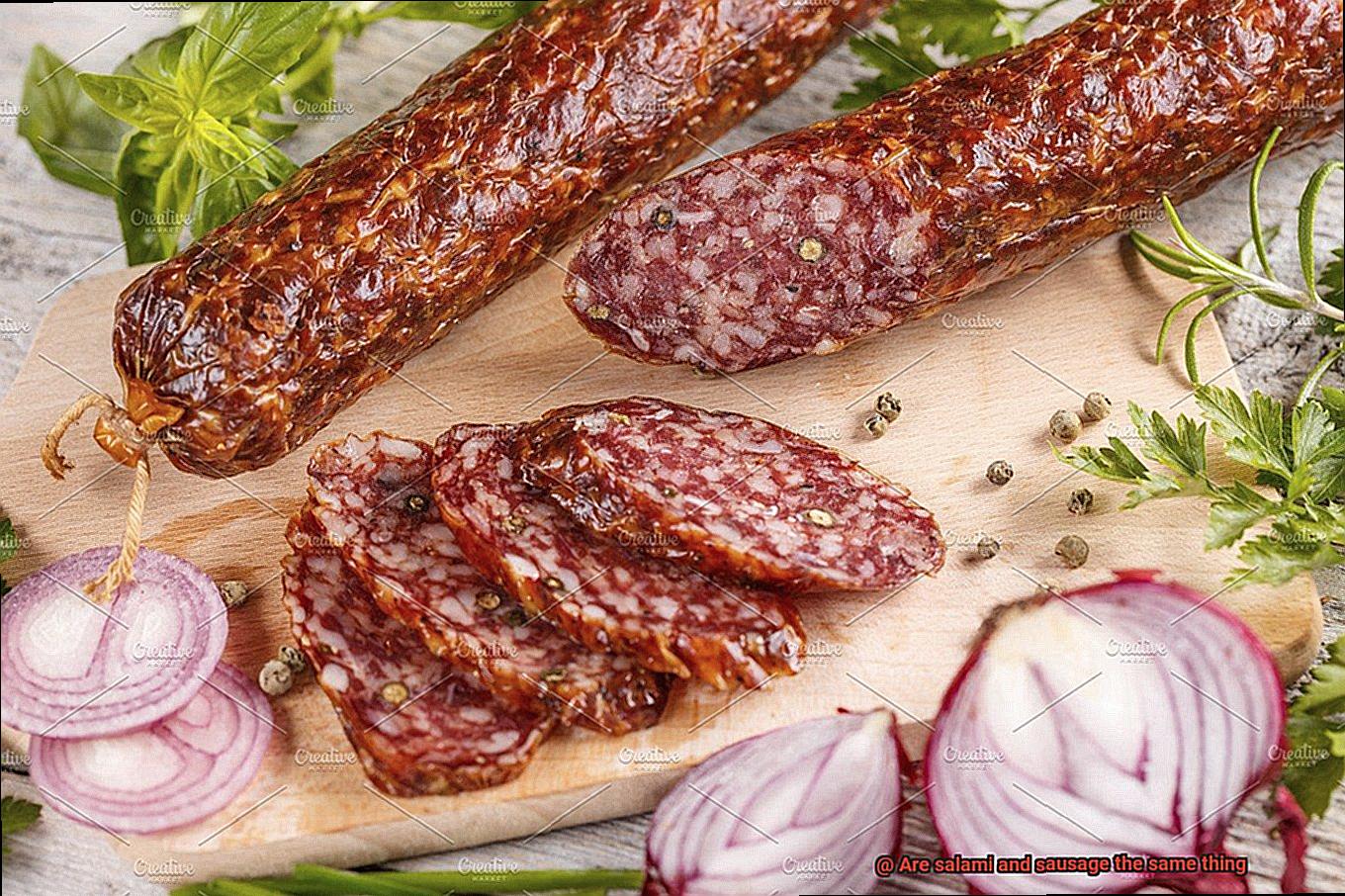
After stuffing, it’s time for the curing process. This is where the lactic acid bacteria naturally present in the meat goes to work. The length of time for curing depends on the type of salami or sausage being made but typically ranges from a few weeks to several months. During this time, the meat is fermented, creating a tangy flavor and giving it its characteristic texture.
Curing requires patience, skill, and attention to detail. The temperature and humidity levels must be carefully monitored throughout the process to achieve optimal flavor and texture. Once cured, our delicious salami and sausage are ready to be enjoyed.
These delicacies can be eaten as-is or cooked in a variety of ways. They are perfect additions to sandwiches, charcuterie boards, and pasta dishes. Their versatility makes them popular all around the world.
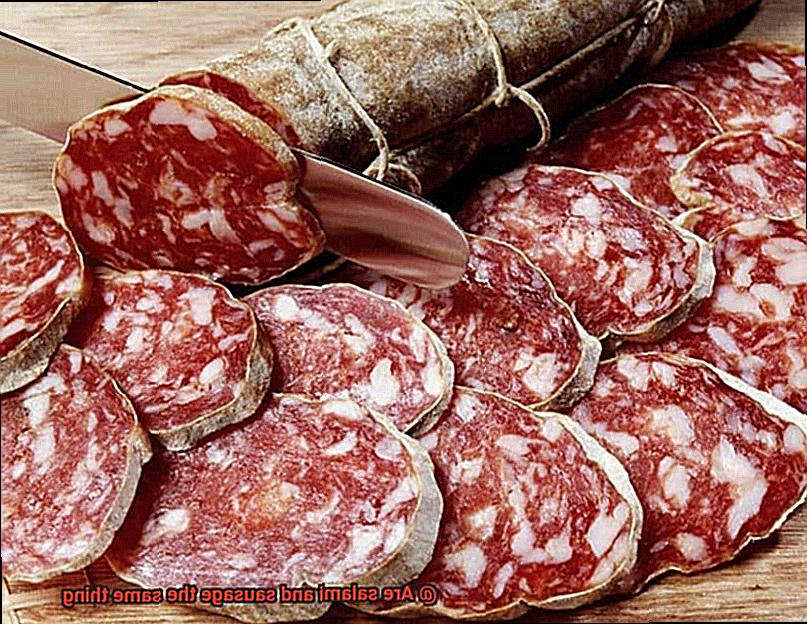
Seasoning of Salami and Sausage
It’s what sets salami and sausage apart from each other, making them unique in their own ways. Let’s take a closer look at how seasoning is used to create these two delicious meats.
Salami is a type of cured meat that is fermented and air-dried. To achieve its distinctive flavor, salami is seasoned with a blend of salt, garlic, black pepper, and other spices. The seasoning mix is carefully rubbed onto the meat before it’s stuffed into casings and left to ferment and dry for several weeks. It’s this fermentation process that gives salami its tangy taste and texture.
Sausage, on the other hand, can be seasoned in various ways depending on the desired flavor. For example, traditional Italian sausages are seasoned with fennel seed, while breakfast sausages may contain sage and maple syrup. Hot dogs often get their kick from paprika or chili powder. The seasoning in sausage can also vary depending on regional and cultural preferences. Chorizo sausage from Spain may have smoked paprika, garlic, and oregano in it, while bratwurst from Germany may be seasoned with marjoram and nutmeg.
Similarities Between Salami and Sausage
The world of meat products can be overwhelming with so many options to choose from. Two popular choices that often get mixed up are salami and sausage. Despite their differences, these meats share a lot in common. As an expert on the topic, let me take you on a journey to explore the similarities between salami and sausage.
Firstly, both salami and sausage are cured meats. The curing process is what sets these meats apart from others. Salt, nitrates or nitrites, and other preservatives are used to preserve them, giving them their characteristic flavor and texture. Whether it’s the tangy taste of salami or the smoky flavor of sausage, the curing process is what brings out their unique flavors.
Secondly, salami and sausage can be made from a variety of meats like beef, pork, chicken, or turkey, or even a combination of different meats. This means that no matter your preference for meat, you can enjoy the delights of both salami and sausage. The versatility of these meats is what makes them such a popular choice among meat lovers.
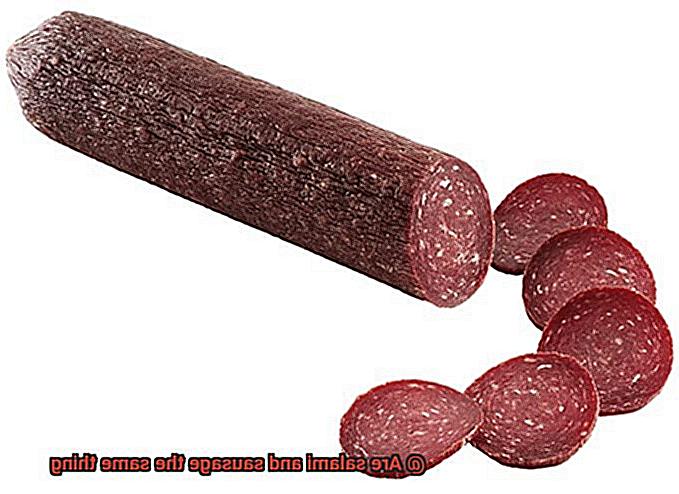
Thirdly, both salami and sausage can be flavored with various spices and herbs. Garlic, paprika, fennel seeds, black pepper are just a few seasonings that add flavor to these meats. These seasonings not only enhance the taste but also improve the overall aroma and appearance of salami and sausage.
Lastly, both salami and sausage are often served as appetizers or snacks. They can be sliced thinly and served on a charcuterie board or added to sandwiches or pizzas. The options are endless with these meats making them perfect for any occasion. Whether you’re hosting a fancy dinner party or just looking for a quick snack, both salami and sausage will hit the spot.
Nutrition Facts of Salami and Sausage
Salami and sausage are two popular options that are often used in various dishes. While they may look similar, they have some differences in their nutritional values that are worth exploring.
Let’s start with salami. This flavorful meat is typically made from beef or pork and seasoned with garlic, salt, and other spices. It’s air-dried and fermented, giving it a unique taste that is hard to resist. A 28-gram serving of salami contains approximately 119 calories, 10 grams of fat, 4 grams of protein, and 419 milligrams of sodium. Salami also contains small amounts of iron, vitamin B12, and zinc.
Now, onto sausage. This ground meat can be made from various meats such as beef, pork, or chicken. It’s mixed with seasonings and often stuffed into a casing before being cooked. An 85-gram serving of sausage contains around 236 calories, 20 grams of fat, 13 grams of protein, and 747 milligrams of sodium. Sausage also contains small amounts of iron and vitamin B12.
While both salami and sausage contain high amounts of sodium and fat, sausage tends to be higher in calories due to its larger serving size. However, this doesn’t mean that salami should always be your go-to option. It’s important to consume both in moderation and balance them with healthier options such as fruits and vegetables.
To summarize, here are some key takeaways:
- Salami is made from beef or pork and is air-dried and fermented.
- Sausage is ground meat mixed with seasonings.
- Salami has fewer calories than sausage per serving but is higher in sodium.
- Sausage has more calories per serving due to its larger size.
- Both should be consumed in moderation as part of a balanced diet.
Different Types of Salami and Sausage
While salami and sausage are both types of cured meats, they have distinct differences that set them apart. Salami is a specific type of sausage that is dried and fermented, giving it a tangy flavor and chewy texture. It is typically made from ground pork or beef mixed with spices and seasonings before being stuffed into a casing for curing. Different variations of salami include Genoa salami, which is flavored with garlic and red wine, soppressata, which is spicy, and finocchiona, which contains fennel seeds.
On the other hand, sausage is a more general term that can refer to any meat that has been ground and seasoned before being stuffed into a casing. It can be made from a variety of meats such as beef, pork or chicken and can be either cooked or uncooked. Some popular types of sausage include bratwurst, chorizo, kielbasa and Andouille sausage. The biggest difference between sausages is their seasoning and preparation method.
Regional Variations
In addition to differences in flavor and preparation, there are also regional variations in salami and sausage. For example, Italian salami is often made with wine and garlic, while Spanish salami is often spicier with paprika. Similarly, German sausage tends to be heavier on spices like nutmeg and ginger, while Polish sausage often contains garlic and marjoram. Understanding these regional variations can help you select the right type of cured meat for your recipe or meal.
Versatility in Cooking
Both salami and sausage are incredibly versatile in cooking. Salami can be sliced thin for snacking or added to sandwiches, pizzas or pasta dishes for an extra burst of flavor. Sausages can be grilled to perfection on the barbecue, pan-fried for breakfast or added to stews and casseroles for a hearty meal. With so many types of salami and sausage to choose from, the possibilities for delicious meals are endless.
nCBFDMOstO8″ >
Conclusion
In summary, while salami and sausage may appear interchangeable, they are actually quite distinct in their taste, texture, and preparation. Salami is a fermented and air-dried sausage that boasts a unique flavor profile and texture. It’s crafted by grinding high-quality meat, adding seasonings, curing agents, and other ingredients before stuffing the mixture into casings. On the other hand, sausage is a more general term that encompasses any ground meat product seasoned and stuffed into casings or formed into patties.
Despite their differences, both salami and sausage offer versatility in cooking and can be enjoyed in various dishes like pizza, pasta or sandwiches. They are also both cured meats that contain high levels of sodium and fat. However, when consumed in moderation as part of a balanced diet, they can be a mouthwatering addition to any meal.
From spicy pepperoni to savory chorizo to sweet Italian sausage links, there are countless types of salami and sausage available worldwide with unique flavors and regional variations. Understanding these differences can help you choose the perfect type of cured meat for your recipe or meal.
Whether you prefer the tangy taste of salami or the smoky flavor of sausage, there’s no denying that both are delicious delicacies with rich histories dating back centuries.

